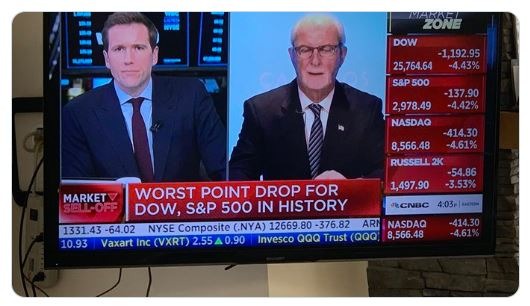One of the things that scream incompetent is the inability to distinguish between what is a relative figure and what is an absolute figure. You most often see this sort of idiocy in the reporting of the risks associated with various events such as diet or drug interventions. For example, consider this statement – eating bacon twice per week raises your risk of cancer by 25%. If you are prone to a bit of bacon on toast like me this is an alarming statement and it is designed as such. But what if I said to you if 100 people went from eating bacon once per week to twice per week that the number who get cancer would go from 4 out of every 100 to 5 out of every 100. Your emotional response would be different. This is because relative and absolute are not the same things – they convey a different message.
Consider the screen grab below which popped up on my Twitter feed this morning.
Note the headline in red at the bottom of the screen – this is a reference to an absolute number and is designed to generate a particular response. Consider the table below where I have ranked the largest percentage falls in the recent history of the Dow.
You can see that last nights fall only comes in at number 27 on our little hit parade. And we are back to that word again – context.
Much of your responses to events such as a market that is slipping is based upon your understanding of history and by history, I don’t mean what you read on your social media last week. I mean actually diving into the history of price and understanding what has happened in the past. When you take time to do this (and I know most won’t) you learn something fascinating – there is nothing new. Markets go up and markets go down – the extent to which they do either of these is driven by the emotional responses of market participants.







How dare you try to be relevant again Chris ! Context now only matters in “how it affects me today”…welcome to the new world.